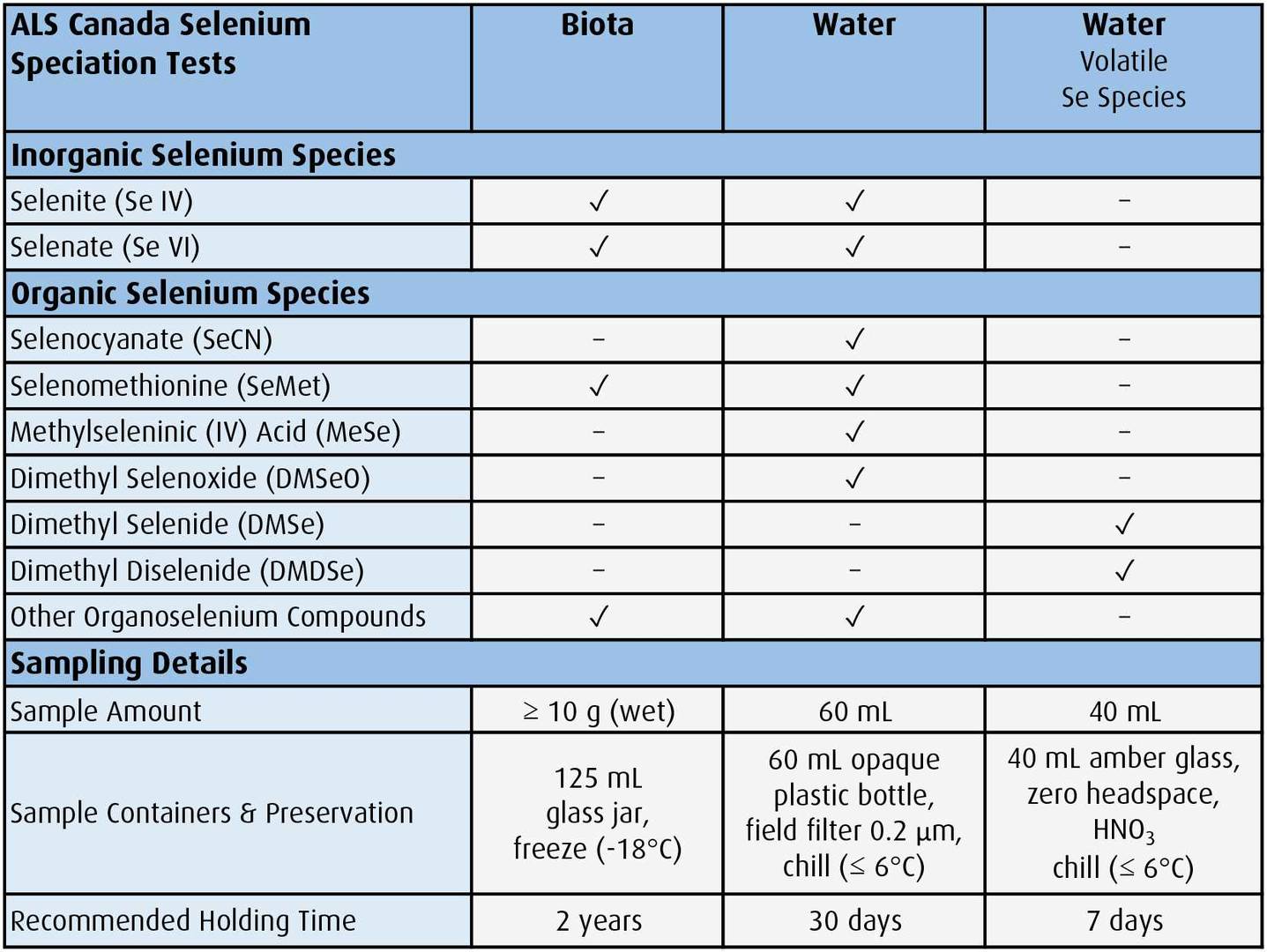EnviroMail 17 Canada
The Importance of Selenium Speciation in Understanding Environmental Risk
Selenium (Se) is an essential nutrient for humans and many microorganisms, as a component of selenoproteins such as selenocysteine (the 21st amino acid) and selenomethionine. The recommended dietary allowance for selenium is 55 μg/day, but excessive levels can cause human health problems (selenosis).

Selenium occurs naturally in foods such as fish, nuts, cereals, and mushrooms. Brazil nuts are the richest known dietary source. In June 2015, the US Food and Drug Administration (FDA) published minimum and maximum levels for selenium in infant formula.
Environmental Selenium Challenges
Environmental contamination of selenium is a growing global concern, since it is highly toxic to fish and marine wildlife such as aquatic birds, especially in its inorganic oxyanion forms of selenite (SeO32−) and selenate (SeO42−), which also have high bioaccumulation potential. Selenium is found at high levels in organic-rich marine sedimentary rocks including oil shales, coal, phosphate deposits, and in sulfide minerals. Limiting anthropogenic environmental selenium contamination has recently become a major focus for the mining and power sectors, particularly for coal fired power plants, coal mines, phosphate mines, base metals mines, and for the oil & gas industry, because stricter environmental regulations for selenium are coming into force in Canada and the USA.
Why Test for Discrete Selenium Species?
In order to predict the behaviour and impact of selenium in the environment, including how bioaccumulation to toxic levels can occur, the concentrations of discrete selenium species should be measured and understood. In the aqueous environment, selenium exists predominantly as the dissolved oxyanions selenite [Se(IV)] and selenate [Se(VI)], but can also occur as Se(-II) in organic compounds. Organoselenium compounds can occur in many forms, with common examples including volatile organoselenides such as dimethyl selenide (DMSe) and dimethyl diselenide (DMDSe), selenols (similar to alcohols), selenocyanate (the selenium analog of thiocyanate), and the selenium analogs of amino acids such as selenomethionine and selenocysteine. Dimethyl selenoxide and methylseleninic acid can occur as oxidative byproducts of dimethyl selenide and dimethyl diselenide.
To prevent environmental harm, industries that produce waste streams with high selenium content must invest in treatment systems to capture selenium. State-of-the-art treatment systems often use bioremediation reactors to microbially reduce toxic selenite and selenate to insoluble elemental selenium [Se(0)], which can then be physically removed. Measurement and control of discrete selenium species concentrations is important for the optimization and reliable operation of these complex biosystems.
Selenium Species Measurement
For quantitative measurement of most discrete selenium species to sub part per billion levels, Liquid Chromatography coupled with collision cell Inductively Coupled Plasma Mass Spectrometry (LC-ICPMS) is the state-of-the-art analytical technology, affording high sensitivity to achieve ultra-trace level detection limits with virtually no interferences LC-ICPMS provides highly accurate and precise measurements of the major environmentally prevalent species of selenium such as selenite, selenate, selenocyanate, selenomethionine, dimethyl selenoxide, and methylseleninic acid. LC-ICPMS can also quantify unknown selenium compounds, including degradation byproducts and metabolites. The standard convention for selenium speciation testing is to report all species concentrations in units of selenium concentration (i.e. “as Se”), rather than as actual species concentrations, but either approach may be used.

Volatile Se Challenges to Routine Metals Analysis
Some complex sample matrices (especially those produced by anaerobic bioreactors) may contain volatile reduced organoselenium species that can complicate routine testing for total and dissolved selenium by ICPMS, potentially causing bias such that dissolved Se test results exceed total Se results. ALS Canada has developed techniques to mitigate this bias, to facilitate generation of accurate test results for total and dissolved selenium in samples where volatile selenium species may be impacting laboratory data quality. In addition, ALS can directly analyze and quantify the two most common volatile selenium species, dimethyl selenide (DMSe) and dimethyl diselenide (DMDSe), to conclusively characterize and explain this phenomenon.
Sampling Considerations
Refer to the table below for details regarding sample collection and preservation requirements, and for the specific selenium speciation tests currently offered by ALS Canada’s Vancouver laboratory. Biota samples should be frozen prior to submission if possible. Water samples require field filtration, ideally to 0.2 μm or less, to achieve preservation from bacteria-induced species conversions; acid preservation must not be used for inorganic selenium species testing, because species conversions could result. ALS can supply suitable syringe filtration media. Zero headspace sample containers with nitric acid preservation are required for volatile selenium species.

Se Speciation Sampling & Analysis Details
ALS Vancouver currently holds ISO 17025 accreditation for selenium (IV), selenium (VI), and selenomethionine in waters and biota (tissue). New substances are frequently added to our list of accredited tests; please consult our CALA scope of accreditation for current status.





















































